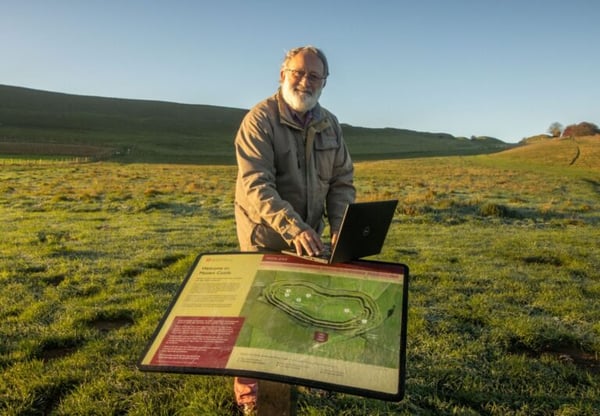MoJ reveals digital twin pathfinder project
As the world around us becomes increasingly digitalised, our national infrastructure is having to adapt to a new digital age. Although still in their infancy in the public sector, digital twins offer an effective solution to the demands of this new world. Put simply, digital twin technology replicates a building’s physical structure in the digital realm, allowing the operator to track and monitor each element of a building throughout its lifecycle.
This technology also has the capacity to be a key contributor to government targets to reach net zero by 2050, due to its ability to identify efficiencies in energy usage. This perhaps explains the strength of the government’s commitment to rolling out digital twins across the public sector.
Kier and the Ministry of Justice (MoJ) have been working with Future Decisions, Glider and Accurro on a digital twin pathfinder project at HMP Five Wells, a category C resettlement prison made up of nine buildings and 1,700 cells. As the first of its kind in the public sector, this digital twin project is particularly significant as it will act as a pathfinder not just for HMP Five Wells, but could show us how improvements can be made across the public sector estate.
Five Wells, a category C resettlement prison made up of nine buildings and 1,700 cells. As the first of its kind in the public sector, this digital twin project is particularly significant as it will act as a pathfinder not just for HMP Five Wells, but could show us how improvements can be made across the public sector estate.
For us, the objective is to work together to use digital twin technology to make the MoJ estate more energy efficient. Not only will these efficiencies contribute to the government’s net zero objectives, but they will also reduce the MoJ’s energy bills, currently sitting at upwards of £100 million per year.
Phase one of this pathfinder project began in March 2023, and involved the creation of a digital twin on one of the prison’s housing blocks, designed in 2017, as a test case for the wider site.
The purpose of this phase has been to create a baseline of data that proves the need for investment in physical hardware upgrades to the houseblock during phase two. These upgrades will enable a finer level of data collection and building control, ultimately enhancing the capabilities of the digital twin.
This baseline included data on factors such as temperature, carbon dioxide levels and humidity that allow the prison’s operators to, for example, reduce heating in areas of the building that can benefit from solar radiation during certain periods of the day. In turn, these adjustments contribute to the project’s objectives by allowing the MoJ to move towards net zero and reducing the estate’s energy bills.
Further to this, through the study we have also realised the ability for digital twins to provide an insight into how conditions in which inmates are housed can affect behaviour. To understand our behavioural objectives, the Kier team aligned the above baseline data with data collected at the prison on factors including incident rates, sleep and self-harm. An example of this was data collection through wearables used to track the sleep patterns of inmates and whether they were affected by factors such as temperature.
Within the year, this first phase was completed, with a report on its key findings due out in the coming weeks. In a prison setting, the data collected during phase one of this pathfinder project has proven that digital twin technology can bring tangible benefits to both energy efficiency and inmate behaviour and we’re looking forward to continuing our partnership on more of the legacy prison estate.
A blueprint for digital twins
The lessons we’re learning at HMP Five Wells have ramifications far beyond the prison sector. There is also a strong case for the benefits digital twins could bring to other public sector assets such as schools and hospitals. For example, the Department for Education has already found that school students’ ability to concentrate is linked to temperature and levels of carbon  dioxide. Therefore, being able to track and control these factors through a digital twin could contribute to improved productivity in a classroom setting.
dioxide. Therefore, being able to track and control these factors through a digital twin could contribute to improved productivity in a classroom setting.
But this isn’t just a ‘nice to have’. The government’s Transforming Infrastructure Performance Roadmap to 2030 demonstrates their commitment to rolling out digital twins across the public sector. This pathfinder project at HMP Five Wells is therefore an integral part of the nation’s infrastructure objectives, and a blueprint for the journey other government departments must make towards net zero through the use of digital twins.
Under these objectives, and given the diversity of the public sector estate, digital twins will need to be both integrated into the planning of newbuild assets and retrofitted onto legacy assets with little to no existing digital footprint. In this way, our work at HMP Five Wells can be seen as a trial of what is possible across the entirety of the public sector estate, from prisons to schools and hospitals.
As the public sector faces a variety of challenges, not least the race to reach net zero, digital twins are already proving to be a key piece of the puzzle. The ability of government departments to create and operate digital twins is therefore a vital investment in their future.






